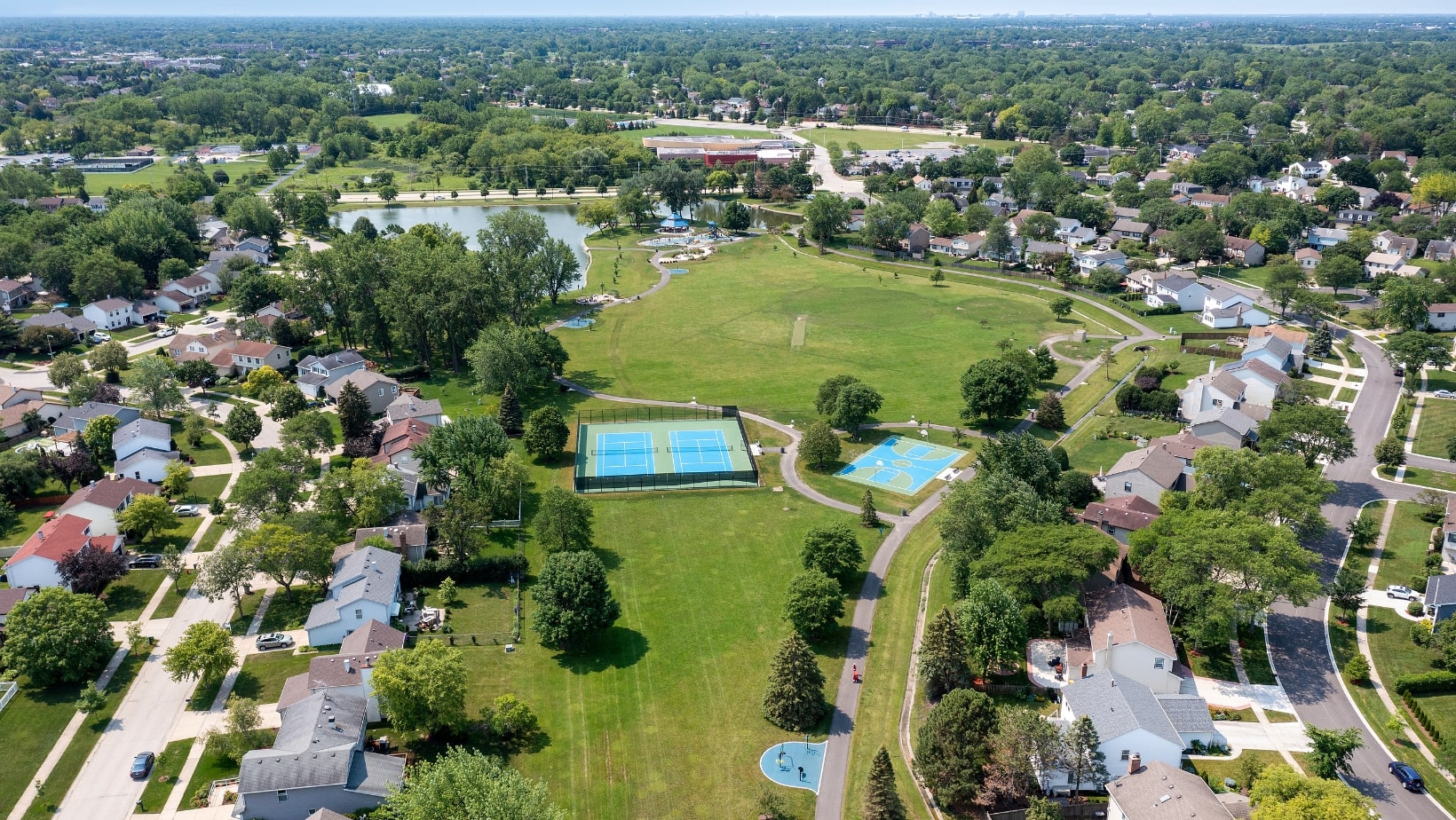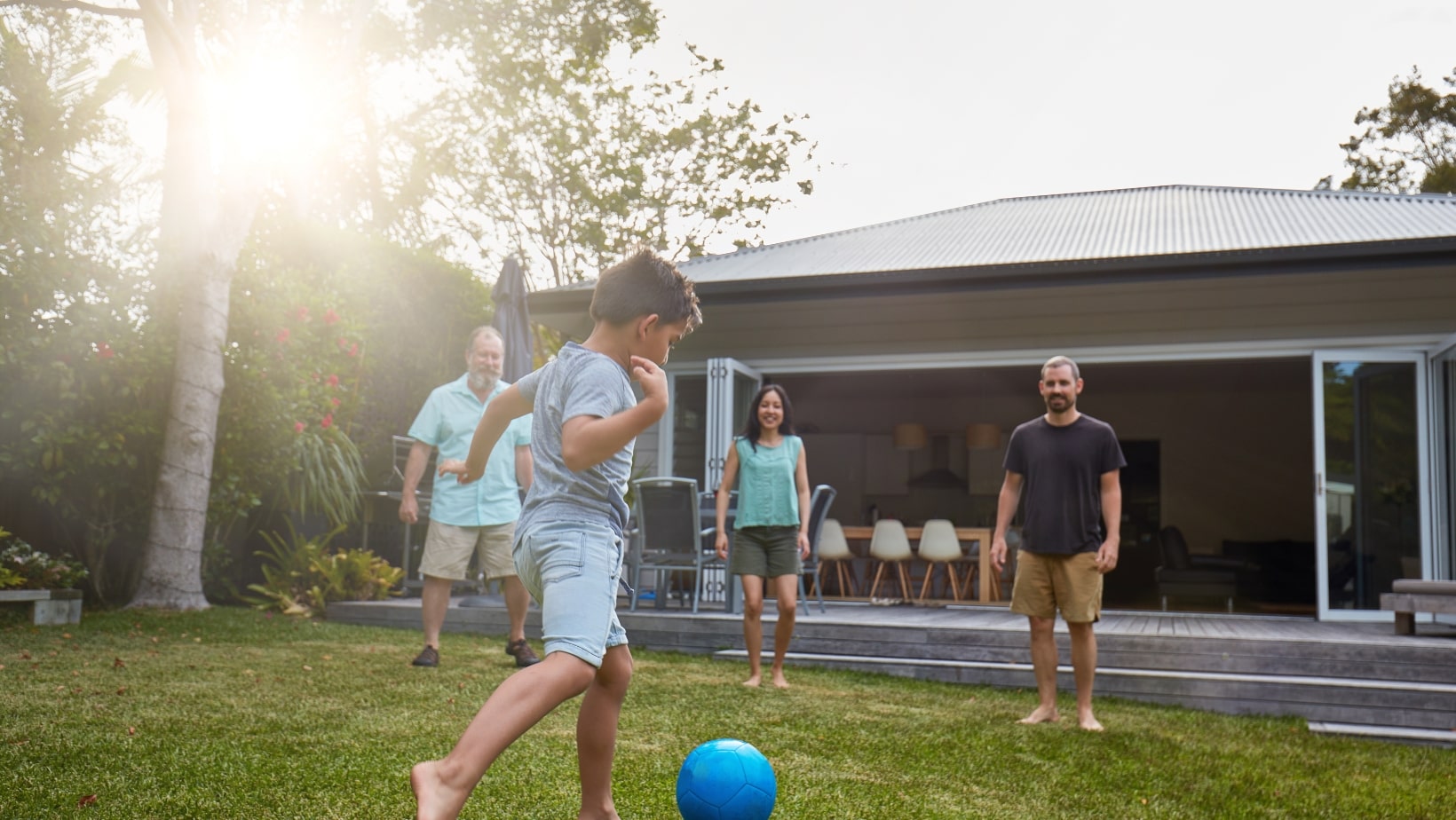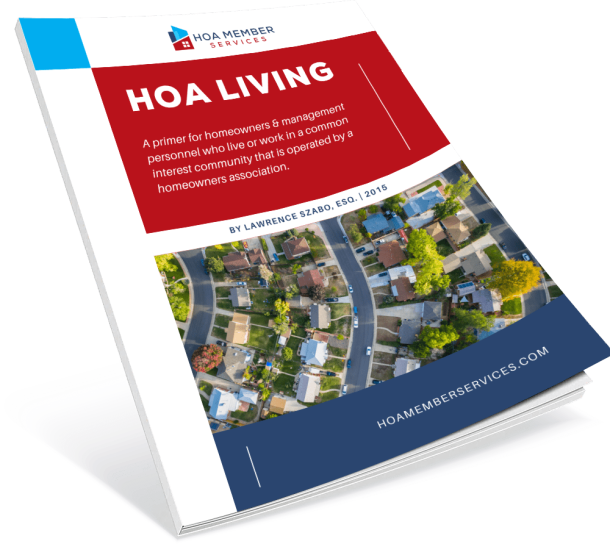Have you ever been flipping through neighborhood options and stumbled across terms like ‘HOA’ and ‘PUD,’ wondering, ‘Wait, what’s a PUD?’ If you’re like most people, you’ve probably heard about HOAs a million times — but PUDs? Not so much.
Both PUDs (Planned Unit Developments) and HOAs (Homeowners Associations) help manage neighborhoods, but they do it in distinctly different ways. Knowing what sets a PUD apart from an HOA could change how you view your next home purchase.
PUDs oversee larger, more comprehensive developments, while HOAs focus on maintaining shared spaces and enforcing community guidelines. And when it comes to your home, it pays to know what exactly you’re getting into.
So, let’s break it down and clear up the confusion.

What is a PUD (Planned Unit Development)?
A Planned Unit Development, or PUD, is a type of community that breaks away from the traditional mold of how neighborhoods are built.
Imagine living in a neighborhood that feels like a small town — where you can walk from your front door to a grocery or drug store, hit the gym, and take the kids to the park, all without leaving your community.
Well, that’s the beauty of living in a Planned Unit Development (PUD). It’s not your typical cookie-cutter suburban neighborhood or condo association.
A PUD is a type of community designed to give developers the freedom to mix and match different types of spaces — residential, commercial, and recreational — all within one development.
So, instead of following rigid zoning rules, PUDs create a more adaptable living environment, which is a big draw for many homeowners. They allow developers more flexibility in land use, creating communities where homes, office spaces, and parks coexist harmoniously.
This means you could have a row of townhouses next to a community center, a playground across the street from a few small businesses, and a walking trail that weaves through it all.
It feels more like a custom neighborhood than a cookie-cutter subdivision — where everything you need is right within reach — all thanks to special zoning regulations that allow for such creative developments.
Key Characteristics of a PUD:
- Ownership Details: One of the standout features of a PUD is that homeowners typically own not only the house but also the land it sits on — different from models like condominiums, where you only own the interior space.
- Property Types: PUDs are incredibly diverse. They can include single-family homes, townhouses, apartments, and even commercial spaces like shops or restaurants — all within the same development.
- Amenities and Services: PUDs often feel like mini-cities, offering private amenities, including everything from parks and walking trails to community centers and playgrounds. The goal? To elevate residents’ quality of life by giving them everything they need, right at their doorstep.
How PUDs are Governed
While a PUD might feel like a dreamland of flexibility, it’s still grounded by structure. Most PUDs are managed by a homeowners’ association (HOA) or a similar governing body, but it’s a bit different from what you might expect with a traditional HOA.
In a PUD, the management often has a broader role because there’s more to manage. There are usually specific design standards and rules that ensure the community maintains its unique aesthetic and keeps property values high.
However, the rules can be more specific and complex than your standard HOA because the association might have to balance the needs of homeowners, renters, and business owners all at once.
What is an HOA (Homeowners’ Association)?
So, you’ve probably heard the term ‘HOA’ thrown around when talking about neighborhoods or buying a home. But what exactly is a Homeowners’ Association, and why does it matter?
Well, at its core, an HOA is a group in charge of keeping your neighborhood or condominium complex looking great and running smoothly. It’s an organization usually made up of residents, like your neighbors, who volunteer to help manage and enforce rules within the community.
These rules cover everything from how homes should look to how shared spaces like pools and parks are maintained. It’s a way to keep everyone on the same page and the community running smoothly.

Key Characteristics of an HOA
- Ownership Details: In a homeowner association, you are entirely the property owner — no questions about that. Your yard, your roof, and your land are yours to enjoy. (Except in a condo, where you only own the space within your walls, and the land ownership is shared by individual unit owners.)However, you share ownership and responsibility for the common spaces, like the community pool or clubhouse. Think of it as a mix of personal freedom and shared responsibility.
- Primary Role: An HOA’s job goes beyond trimming the hedges or fixing the community playground. They’re there to ensure everything looks polished, resale values stay high, and no one’s house becomes an eyesore. This means they might have specific guidelines about everything from the color you can paint your front door to how tall your grass should be. It’s all in the name of preserving a polished neighborhood aesthetic that benefits everyone — whether they like the rules or not.
- Fees: You have to pay monthly fees to support the services provided by the HOA, such as maintenance, repairs, and sometimes fun events. Think of it as a community piggy bank that keeps everything running. These fees can vary wildly depending on the neighborhood, but they’re mandatory if you live there. And no, paying these fees doesn’t mean you get a slice of ownership in the pool or clubhouse. You just get to use them — under the HOA’s watchful eye, of course.
How HOAs are Governed
An HOA works a lot like a small government. It is typically run by a board of directors, which is often made up of homeowners who volunteer for the job.
These folks are elected by the rest of the community to keep things in line and call the shots on behalf of everyone. The board members are tasked with making sure the community’s rules and regulations are followed.
These guidelines, officially known as CC&Rs (Covenants, Conditions, and Restrictions), cover how you can use or modify your property. It can dictate anything from how high your fence can be to whether you can park your RV in the driveway.
What is the Difference Between a PUD and an HOA Community?
1. PUD vs. HOA: Ownership and Responsibility
- PUD: If you live in a PUD community, you generally own both the home and the land it’s built on. In addition to your personal property, you’ll also have shared ownership of common areas like parks or playgrounds. These common spaces might still be overseen by a developer or a third party, but they typically work in coordination with the HOA to ensure everything runs smoothly.
- HOA: In some cases, like condos, your ownership might stop at the drywall, but in other types of communities, you own the land as well. Meanwhile, the HOA owns and maintains the common areas, so you’re off the hook for mowing lawns or fixing roofs. That said, it also means they get a lot of control over what happens outside your home, and you’re following their rules.
2. PUD vs. HOA: Land Use
- PUD: Ever dream of strolling out your front door and grabbing a coffee at a café on the same block? PUDs can make that a reality with their mixed-use layouts that blend residential with commercial spaces. You might find yourself living next to a coffee shop, park, or even small businesses, which can make your neighborhood feel vibrant and self-contained.
- HOA: HOAs are more traditional. They are more like the suburbs we’ve come to know — single-family homes or condos in a quiet, residential bubble, with community amenities neatly tucked away.
3. PUD vs. HOA: Regulation and Flexibility
- PUD: PUDs offer more flexibility when it comes to what you can do with your property. Want to turn your garage into a workshop? Maybe open a small business from home? There’s usually more wiggle room because the zoning allows for mixed uses — residential and commercial.
- HOA: HOAs usually come with a long list of dos and don’ts to make sure everything stays uniform. They’re all about consistency and keeping the neighborhood looking neat and tidy. So, if you want to paint your front door bright red or add a funky fence, you might run into some pushback.

4. PUD vs. HOA: Taxes
- PUD: PUD life can come with some extra tax liability. You’re not just paying for your home — you might be covering private amenities like roads, parks, or utilities, which means extra property taxes or assessments on top of any HOA fees.
- HOA: With an HOA, it’s a bit simpler. You’ll only pay property taxes on your private home, and the shared amenities like the pool, clubhouse, or green spaces are covered by the HOA fee you pay. There’s no additional tax burden for maintaining those areas, which makes things more predictable, though HOA dues can still change.
5. PUD vs. HOA: Cost
- PUD: Even if we don’t consider the taxes, PUDs can still be a little pricier because you pay fees for more comprehensive services, such as maintaining both private amenities and public infrastructure. These fees can sometimes overlap with city taxes, making it feel like you’re paying twice.
- HOA: HOA fees tend to be lower because they’re just focused on shared amenities — pools, landscaping, and maybe some exterior maintenance. You’re not covering the public infrastructure, so maintenance costs are a bit more straightforward. However, surprise assessments or fines can pop up for things like repairs or rule violations, so it’s not completely stress-free.
6. PUD vs. HOA: Legal Responsibilities
- PUD: Living in a PUD might mean you’re dealing with a few extra municipal or public regulations because businesses or public spaces are involved. Zoning laws or local ordinances can come into play, adding a layer of complexity to PUD’s rules of what’s allowed in your community.
- HOA: HOAs, on the other hand, are all about private contracts. You’re signing up to follow the association’s rules, which include CC&Rs (Covenants, Conditions, and Restrictions) and bylaws. These governing documents lay out what exactly you can and can’t do with your property. It’s a tightly run ship, but you know the rules going in.
7. PUD vs. HOA: Resale Value
- PUD: If a PUD is well-maintained and the community thrives, it can really boost your home’s value. The mix of residential and commercial spaces can make the neighborhood more attractive to buyers. However, if commercial areas like businesses or offices don’t do well, it could negatively impact resale values.
- HOA: HOAs tend to keep things stable when it comes to property values. The strict rules about appearance and upkeep ensure that everything stays looking good, which appeals to future buyers. While the increase in resale value benefits current property owners, too many rules can scare off some people who prefer more freedom with their property.
Pros and Cons of PUDs vs. HOAs
Benefits of Living in a Planned Unit Development (PUD):
- Variety and Flexibility: One of the biggest perks of living in a PUD is the variety, as there’s a lot more flexibility in how the community is designed. It blends single-family homes with townhome communities and even commercial spaces like shops or cafes. Planned Unit Developments are perfect if you love the idea of a dynamic life or maybe even living within walking distance of a park or a cool new bistro.
- Comprehensive Community Planning: PUDs aren’t just about variety; they’re also planned with a bigger picture in mind. It’s a more holistic approach where residential areas, commercial spaces, and recreational spots are all part of one master plan. This means the community is more self-contained. You could easily have everything you need, from grocery stores to green spaces, without having to leave the neighborhood. For people who value convenience and having it all in one place, this is a big plus.
- Enhanced Lifestyle: PUDs often come with more than just the typical amenities you’d expect in a traditional HOA neighborhood. You get access to a lifestyle where leisure, convenience, and practicality are all wrapped up in one place. Think public parks, trails for walking or biking, and even retail or business services right within the community. It’s more like living in a little town that has everything within reach, which can really improve your overall quality of life.
- Land Ownership: Another key benefit is property ownership. In a PUD, homeowners typically own not just their home but also the land the property sits on. That might not seem like a big deal at first, but it gives you more autonomy and control over your property. Compared to condo-style developments, where condo owners jointly own the land with other residents, it is a pretty big advantage if you value having a say in what happens on your land.
Drawbacks of Living in a Planned Unit Development (PUD):
- Higher Costs: Now, all those perks and amenities don’t come for free. PUDs tend to have higher HOA dues because they’re responsible for more services, infrastructure, and amenities. They cover things like maintaining parks, upkeep of privately owned roads, taking care of mixed-use spaces, private security, and more. So, if you’re not someone who plans on taking advantage of all these extra services, the costs might feel like overkill.
- Complex Governance: Another of the biggest problems with a PUD (Planned Unit Development) is the way they’re managed. The governance can be more complicated than in a traditional HOA because you’re dealing with both private community management and public utilities.You might find yourself caught between different sets of rules or unclear on who’s in charge of what. This overlap in governance can sometimes lead to confusion or even conflicts over responsibilities and services.

Benefits of Living in a Homeowners Association (HOA):
- Focused Governance: HOAs are pretty straightforward when it comes to their responsibilities. The rules are clear-cut, and the focus is solely on the residential side of things, which usually involves just maintaining the values of properties and enforcing community standards. They don’t have to worry about managing commercial or recreational spaces as PUDs do, so their governance is usually more focused and easier to navigate. For people who like knowing exactly what’s expected and how things are run, this can feel like a relief.
- Lower Fees: Another plus point of living in traditional homeowners associations (HOAs) is that the monthly dues tend to be lower compared to PUDs.Since they’re only dealing with residential properties and maintaining common areas (like landscaping, community pool, etc.), you don’t have to pay dues for extras like commercial infrastructure or recreational services. If you’re budget-conscious or don’t need a lot of extras, the lower fees are a big selling point.
- Community Cohesion: HOAs can foster a tight-knit sense of community. The shared amenities, like swimming pools, parks, or clubhouses, provide natural gathering spots for neighbors to connect. Plus, many HOAs organize community events, which can bring residents together and create a strong sense of camaraderie. For people who enjoy getting to know their neighbors and participating in community activities, this can be a huge advantage. Moreover, the consistent property standards enforced by the HOA can contribute to a more unified, aesthetically pleasing neighborhood, which helps build pride among residents.
Drawbacks of Living in a Homeowner’s Association (HOA):
- Strict Community Regulations: Of course, there’s always a flip side. While some people appreciate the order and uniformity that comes with living in an HOA, others might find it a bit stifling.HOAs tend to enforce strict rules about everything from the color of your house to how you maintain your yard. For homeowners who like to express their individuality through their homes, these regulations can feel limiting.
- Potential for Conflict: Another issue that sometimes comes up in HOAs is conflict. Disagreements between homeowners and the HOA board can happen, especially when it comes to enforcing rules or dealing with fines.If a homeowner violates a rule, intentionally or not, the association owns the right to impose fines or initiate disputes. Even minor issues like changing the color of your front door without approval can lead to conflicts. In some cases, these conflicts escalate and can create tension within the community or even lead to legal battles.
Common Misconceptions About PUDs and HOAs
Misconception 1: PUDs and HOAs Are the Same Thing
We’ve covered this earlier, but it’s worth repeating: PUDs and HOAs are not interchangeable. This one comes up a lot, and we totally get it. They both sound like they’re all about managing communities, so it’s easy to lump them together.
But here’s the deal: PUDs and HOAs actually serve different purposes. A PUD is a specific type of development that can mix all kinds of land uses within the same area.
On the flip side, an HOA is an organization that governs a residential community, enforcing rules and managing shared spaces. So, while a PUD can have an HOA, they’re definitely not the same thing.

Misconception 2: PUDs Are Always More Expensive Than HOAs
Yes, PUDs often come with higher fees, but that’s because they sometimes offer more — like extra amenities or broader services. But that doesn’t mean PUDs are automatically going to cost you more.
It really depends on the specific development and what’s included in those fees. Some PUDs can actually be quite affordable, especially if they don’t have tons of extras like swimming pools or gyms.
Misconception 3: HOAs Only Enforce Rules on Aesthetics
While HOAs do keep an eye on the aesthetics to maintain a certain look in the neighborhood, they’re also about a lot more than that. HOAs take care of the common areas, handle repairs, and ensure that everything is running smoothly.
They might even step in when neighbors are having disputes. So, there’s a lot of behind-the-scenes work that goes into keeping the community safe and functional.
Misconception 4: PUDs Have No HOA
A lot of people think that living in a PUD means you’re off the hook from dealing with an HOA. Not so fast! Many PUDs have an HOA or some kind of governing body that manages shared spaces like pools or playgrounds.
So, even in Planned Unit Developments, you might still have those friendly reminders to keep your yard in check.
Frequently Asked Questions
- Is an HOA always a PUD? No, not always! While a lot of PUDs have HOAs, not every HOA community is a PUD. A PUD is a specific type of development that mixes residential, commercial, and recreational spaces. An HOA, on the other hand, is simply an organization that manages and enforces rules in residential communities, whether it’s a PUD, condo complex, or a traditional neighborhood with single-family homes. So, you can definitely live in an HOA-governed community that’s not a PUD.
- How can I determine if the property is in a PUD? To find out if your property is part of a PUD, start by checking your property deed or the community’s governing documents — usually called CC&Rs. Those should mention if you’re in a PUD.You can also ask your real estate agent, who should have that information handy. If you’re still unsure, looking up local zoning records or checking the property listing can give you a clear answer too!
- Can you sell or rent your property freely in a PUD or HOA community? In both PUDs and HOA communities, there may be restrictions on selling or renting properties. Some HOAs have rules that limit short-term rentals, require approval for certain property sales, or enforce specific buyer qualifications. These regulations help maintain community standards and property resale values.
- Is a Planned Urban Development (PUD) the same as a Planned Unit Development (PUD)? Yes, they’re basically the same thing! Both terms, Planned Urban Development and Planned Unit Development, refer to a community that’s been thoughtfully designed to include a mix of housing types and designated urban areas.The terminology can vary depending on where you are, but they both describe the same concept: a well-planned, multi-use neighborhood.

Conclusion
To cut to the chase, both PUDs and HOAs help manage communities and make them better places to live, but they work in different ways and can have a significant impact on your homeownership experience.
So, before you buy, it’s a good idea to know whether you’re moving into a PUD or HOA and how that choice might affect your day-to-day life and responsibilities.
At the end of the day, PUDs and HOAs offer two different approaches to community living, so it’s all about what works best for you!
Got more questions about HOAs? Become a member for access to expert advice, legal support, and all the resources you need whenever you need them. Take control of your community experience today!


